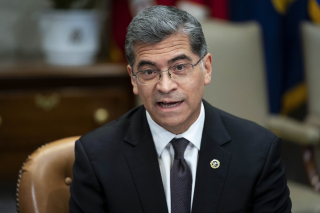A modern healthcare system uses the power of data to empower patients, reduce waste, and improve patient safety. At Stanford Health Care, when we have access to the full picture of a patient’s care, including care provided by physicians outside of our system, we can better prevent negative drug interactions and avoid costly duplicative diagnostic tests. Interoperability, or the ability of health IT systems to share data with each other, can help give physicians a complete understanding of a patient’s care history, no matter where the care occurred.
Launched this week by HHS Secretary Xavier Becerra, the Trusted Exchange Framework and Common Agreement (TEFCA) is a promising leap forward toward universal nationwide interoperability. This government-led private-public partnership, in collaboration with leading health IT providers, aims to establish a one-stop connection point for physicians and hospitals to connect to each other. With this critical interoperability tool in place, now is the time for providers to stand up and participate.
We have come a long way from the days of only faxing health records. Still, the lack of a clear, single connection point to share data creates technical and organizational barriers to sharing patients’ health records with other hospitals or doctors. This lack of interoperability leads to a lower quality healthcare because of fragmented and incomplete patient history. This interoperability gap is a particularly acute consequence for poorly resourced rural and urban safety net hospitals. Improved interoperability of health IT among all systems – large and small, urban and rural, independent and affiliated – can improve health equity and access to care nationwide.
In 2016, Congress took action to address fragmented healthcare data and empowered the Office of the National Coordinator for Health Information Technology (ONC) to take on this challenge. The proposed solution, TEFCA, unites existing networks so when providers connect to one existing interoperability network, they connect to all networks in the TEFCA framework. This eliminates the need to establish multiple connection points and legal agreements with each independent interoperability network or – even worse – individual connections with each provider.
As TEFCA launches, providers like Stanford Health Care will begin using this new framework, ensuring that our clinicians will have a more complete picture of care given by physicians outside of our network, expanding further beyond our current reach. Epic Nexus, a network created by our EHR provider Epic, will serve as a hub to connect us to countless other providers participating in the four other networks that are qualified as network hubs in the TEFCA framework with more to follow. Through our own past investments in interoperable health IT systems – we know that this expanded interoperability will further help patients and clinicians alike.
We are excited to be an early adopter along with other health systems who use Epic to exchange information on TEFCA. We are hopeful that providers who have previously not joined in nationwide information exchange will see this new public-private partnership as a simple on-ramp to nationwide interoperability. With this public-private sector partnership now in place, there should be no confusion on how to become interoperable. There is now a simple litmus test to interoperability – have you joined a network on TEFCA?
Dr. Matthew Eisenberg, MD is the Associate Chief Medical Information Officer for Stanford Health Care at Stanford University. Dr. Eisenberg is also a board member of the Sequoia Project.





